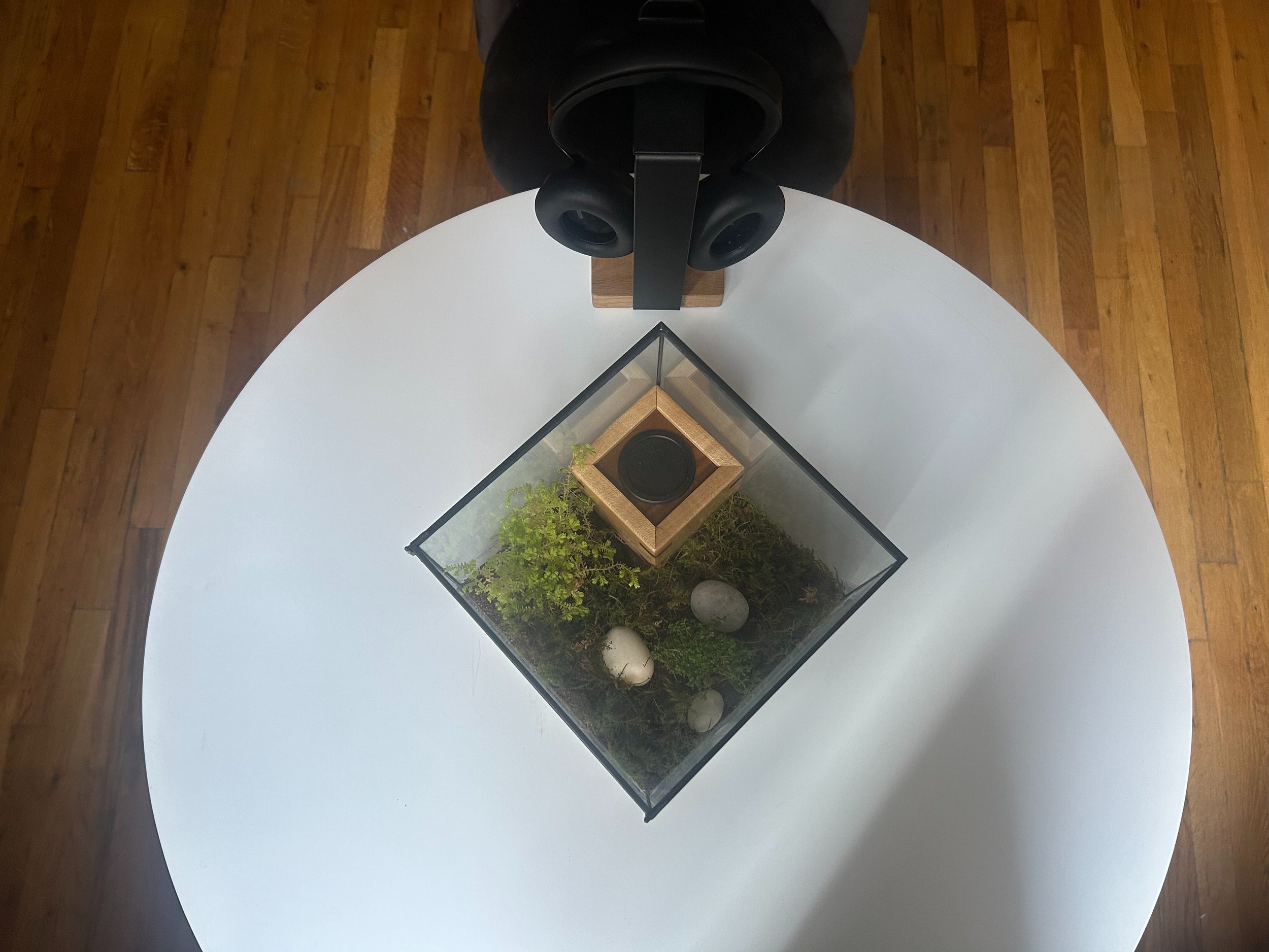
INTERSTICE
installation
produced by Leo Gevisser

As an individual based in New York City, I have somehow found myself needing to prioritize a developing consciousness of the term ‘space’.
‘Space’ in almost every contextualization of the word.

The sonic experience of living in such a city has made me realize that immediate perceptions of space are not only reliant on geographical loci & psychological states: they also rely on a kind of sonic equilibrium.
An absence of a sound equalizing the presence of another.
Even in sound’s absence or removal are we subconsciously able to localize our sense of space both geographically and psychologically.
This installation projects a continuous, composed loop of both urban/industrial and ambient field recordings (using the Zoom H6) taken in areas where I experience both heightened psychological space & a lack thereof. The field recording makeup of the speakers’ audio is comprised of sounds that fall outside of my current perception of geographical & psychological space (e.g. the bustling streets of Manhattan). Whereas the custom speaker inside the terrarium projects audio comprised of the sounds inside my perception of space (e.g. South Africa, Upper Riverside & Central Park Ramble, Beacon NY)—slightly muted by the enclosure of the terrarium. Also enclosed in the terrarium are plants that are geographically native to the areas of which I have consistently found space: Selaginella Kraussiana (South Africa), as well as Christmas Fern and Hemianthus Callitrichoides (Hudson Valley).
Without applying the noise-cancelling headphones, there is an equilibrium of sound that collectively localizes outside of my perceived sonic experience of finding space. When turning on the noise cancellation—thereby connecting directly to the audio from the speaker inside the terrarium—this sonically represents my current perception & collective sonic environment of accessing space from intersecting geographical and psychological loci by applying a removal to the sounds outside of the space in stasis with the sound inside the space.
As noise cancelling headphones consist of a digital signal processor which applies an anti-noise signal (phase inversion) thereby prioritizing low-frequency sounds: I have naturally applied more gain to the lower frequencies of the external speaker audio, and likewise for the higher frequencies of the headphone audio.
